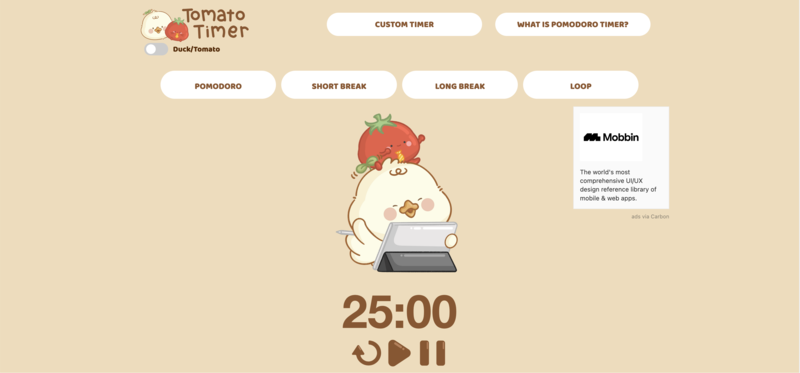Blog
Pomodoro for Music Producers – Working Smarter in the Studio
1 Oct '2025
What is this time management method, and how can you apply it to your work in the studio? See if you can increase your musical productivity after one read

Image by Tima Miroshnichenko on Pexels
Music production isn’t just a fun task. Do it professionally, or with any regularity, and it becomes a discipline. Getting the job done requires you to work through rough patches, beat writer’s block, and be on your game as a force of habit. After a while, production requires the game of workflow, productivity and persistence to succeed.
To improve your work rate and productivity, there are all sorts of strategies and ways to up your game. In this article, we’ll discuss one that’s currently quite popular, the Pomodoro Technique, and how it can be applied to music production.
You may have heard of the Pomodoro method in passing, or might have tried it before to make yourself more productive at a certain type of task. This article will help you first to understand the technique, and then how you might apply it to music production. It won’t match every workflow or every mind, but read on to see if the Pomodoro Technique could help you make more music in a more focused way.
What is Pomodoro?
Pomodoro, or ‘the Pomodoro Technique’ is a method of time management first advised by Francesco Cirillo. It’s named ‘Pomodoro’ after the ‘Tomato’-shaped kitchen timer he first used to practice the technique.

You can easily boil up a juicy Pomodoro with a tool like tomatotimers.com
Essentially, the technique breaks up working windows into four slots of 25 minutes plus a 5-minute break (those two combine to create “one Pomodoro”). After four Pomodoros, you take a longer, 15- to 30-minute break. Step by step, the Pomodoro Technique looks like this…
– 25 minutes of focused work
– 5 minute break (first Pomodoro ends)
– 25 minutes of focused work
– 5 minute break (second Pomodoro ends)
– 25 minutes of focused work
– 5 minute break
– 25 minutes of focused work
– 15-30 minute break
How is Pomodoro supposed to work?
One crucial part of the Pomodoro Technique is to have a defined goal in mind for each 25-minute window. Ensure that the goal is locked in before starting.
The Pomodoro Technique makes use of time windows that are short enough to fulfill but long enough to be useful. It’s built to complement the average person’s attention span, and reduces decision fatigue, since your working schedule is planned out for you.
The kitchen timer can be a key part of the method for some, with the ticking acting to externalise the task, and the bell or alarm announcing the break when it occurs. Some productivity apps or music players have Pomodoro timers built in, to similarly help you associate the phases of the technique with different sounds or playlists.

Credit: Brett Sayles on Pexels
No interruptions?
Interruptions aren’t supposed to happen during Pomodoro, but if they do, they can be deferred until a break, or the Pomodoro itself can be paused to make room for the interruption. Life does happen.
If there are itching tasks you want to carry out, or thoughts you’re trying to keep yourself from having, you’re never far from a small break when you can let these happen.
How can Pomodoro help in music production?
Music producers have various things standing in the way of the task at hand. Both external and internal factors hinder us from our goals.
One frequent curse for music producers is the compulsion to endlessly tweak a sound, which prevents the whole piece of music from being worked on. Getting bogged down during a Pomodoro means that your tweaking session becomes bounded – you’re not far from a bell and a five-minute break if you end up getting bogged down in tweaking a kick or snare sound.
Your creative momentum is something that’s easy to lose as a music producer. With your sessions broken down into manageable chunks, and regular prompts pushing you to move on, things become manageable and progression is almost inevitable.
Adapting the Pomodoro method for in the studio
The Pomodoro Technique may be a workflow booster, but it’s probably fair to say that it was developed more for writing papers and going through emails than for beatmaking, sound design and mixing! So do the same principles of timing and pacing really apply in music production?

Credit: Wilfried Vowoto on Unsplash
Actually, it’s possible that Pomodoro can apply even more in a production context. Focus is as valuable to music producers as it is to writers and thinkers – and there’s another dimension on top of focus: your ears. By resting your ears and changing your perception for five minutes every Pomodoro, you’re forcing your hearing system to take a break and reset. You restore your perspective and your perception of what sounds good.
Example 25-minute production sessions for each Pomodoro
Here are a few tasks you could take from your usual workflow and bring into a 25-minute window for working within the Pomodoro Technique as a music producer.
Generating ideas and designing sound
- Write a 16-bar chord progression
- Generate three variations of a bassline
- Build a drum loop after selecting samples
- Record multiple takes of melody using two synth patches
- Experiment with generating unique FX sounds from one synthesizer
- Layer two sounds to blend together well
Arranging and composing
- Bring out an eight-bar loop to a 32-bar track section
- Create effective transitions between all sections of a track
- Build an intro that foreshadows the main themes of the song
- Experiment with alternative, complementary chord progressions
Mixing (or mixing as you go)
- Balance all levels and/or apply gain staging through pre-amps, and pan elements
- EQ and sculpt frequencies, including the low end
- Add bus compression to more multiple layers more cohesive
- Program automation to emphasize different parts at different times
Housekeeping and workflow
- Ensure all tracks are labelled and colour-coded, unused elements hidden, etc
- Organise your sample library for faster work in the future
Example Pomodoro session for a music producer
Here’s a template Pomodoro session that could help you to break a long production session into more manageable chunks.
Pomodoro 1 – Sound Design for Drums
Using samples or a drum instrument, choose the sounds for your ‘drum kit’, and program the basic beat, with a couple of ideas for embellishments. Go back to the sound selection stage once done to experiment with alternative sounds.
Pomodoro 2 – Main Chord Progression and Melody
Experiment with chords and building a unique but comfortable progression for your main loop. Expand on this by coming up with at least three ideas for melodies that would go with the progression. If there’s time, develop some ideas for an alternative progression to use elsewhere.
Pomodoro 3 – Spin out an Arrangement
Arrange the introduction and into the first drop. Bring in more instruments and/or samples, and introduce some ideas that may be useful later in the song – or could get stripped away if you develop a better strategy later.
Pomodoro 4 – Develop and Mix (somewhat)
Develop into the next section of the song, but don’t complete it. Do some basic ‘mixing as you go’ to organise elements and make the song sound cohesive as a whole. Export what you have so far in order to kick off your next large session by listening back to it.
Long break
Spend 15-30 minutes elsewhere, or engaged in another activity, and don’t forget to rest your ears too.
 Credit: Unseen Studio on Unsplash
Credit: Unseen Studio on Unsplash
Tweaking Pomodoro for an extended creative flow
The Pomodoro Technique is prescriptive, but it doesn’t have to be rigid. The vanilla, 25-minute version is a reasonable place to start, but you can adapt the technique to work differently, within different bounds.
You may choose to do this because of personal preference – perhaps your attention span works better when taking in focus periods that are longer than 25-minutes. If you try a regular timing of Pomodoro and find that you keep having to stop mid flow, increasing the window to 40 or even 50 minutes is something to try out.
Perhaps the task you’re working on will determine the ideal length of Pomodoro for you. Music production may work better with larger blocks of time, but you could find that smaller chunks of time like 10 or 15 minutes fit the task at hand better, whether or not you change the break time to match.
When changing up your formulations, keep an open mind and analyse the amount of work you get done, as well as how you feel about what you’ve accomplished. Use this analysis to inform your next moves and to help find your ideal working pattern.

